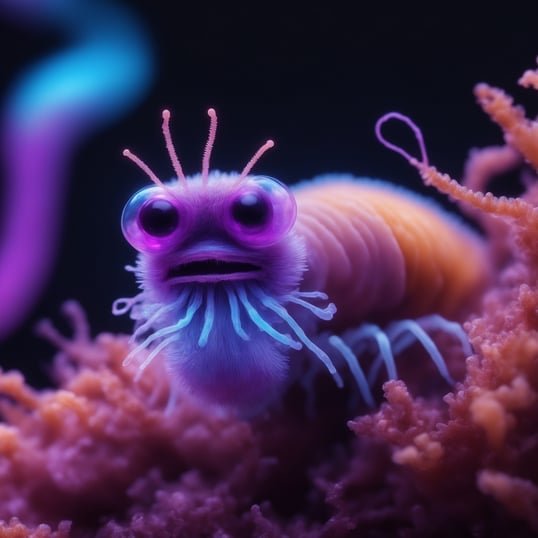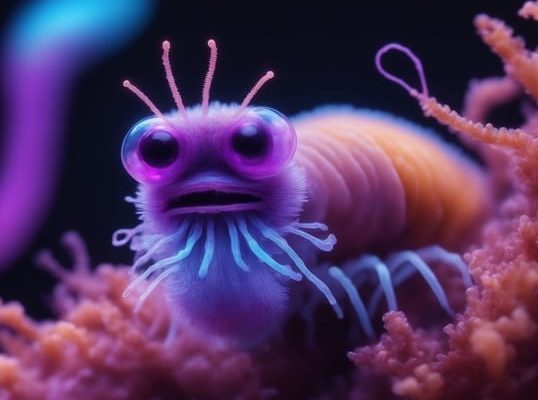
Microworms, especially those from popular brands like Microworms.com, are simple to culture and provide essential nutrition when raising fry or feeding small critters. Keeping track of their activity isn’t just for science nerds—it’s a crucial part of understanding their life cycle and optimizing your feeding regimen. This blog will dive into what seasonal changes mean for microworm activity and how you can monitor these busy little creatures effectively.
Understanding Microworm Basics
Before we dive too deep into seasonal changes, let’s talk about *what* microworms are. Microworms are microscopic nematodes that feed on decaying organic matter, which makes them perfect for baby fish and other small animals. They reproduce quickly, making them an ideal live food source. When you look closely at your microworm culture, you’ll see them squirming around—almost like a tiny dance party happening in there!
To start a microworm culture, you’ll need a few basic items: a food source (like oatmeal or mashed potatoes), a container, and a warm, dark space. These little guys thrive in warm conditions, so keeping them at around 75-80°F (24-27°C) is essential. Honestly, if you can maintain that temperature, you’re already halfway there.
Their life cycle is pretty straightforward too. Microworms start as eggs, hatch into larvae, and then mature into adults. Monitoring their activity helps you identify the best feeding times and understand their reproductive cycles—so let’s explore how those dynamics shift with the seasons.
Spring Awakening: The Season of Growth
As winter fades away and spring breathes new life into the world, microworms also ramp up their activity. With warmer temperatures and longer daylight hours, you may notice your microworm culture becoming more vibrant. During spring, they tend to reproduce more quickly, meaning you’ll have plenty of young worms ready to feed your fish.
To monitor this growth phase, check your culture every few days. Look for signs of thriving activity. If you see lots of tiny wriggles near the surface, that’s a good indicator! You might be wondering how to feed your fry during this bustling time. Keep a close eye on how much food they consume; overfeeding can lead to a messy culture, which is a breeding ground for unwanted bacteria.
Regularly refreshing the food source is also important during spring. Ensure the medium remains moist but not soggy. If you notice a decline in activity, consider adjusting the moisture levels, as they love a damp environment without drowning.
Summer Surge: Peak Activity
Summer is when microworms really come alive. The heat and humidity of the season provide ideal conditions for maximizing your culture. They’ll be wriggling more vigorously, and you might even see some reaching the sides of the container as they explore their surroundings. It’s like a tiny carnival happening just beneath the surface!
To keep up with this surge in activity, you might want to implement a consistent feeding schedule. For maximum growth, feed them a bit more than usual, but be careful not to overwhelm them. Rotating your food source can also be beneficial. Change between oatmeal, yeast, or a powdered option to offer variety.
You might also notice that summer brings changes in your fish’s appetite. As they grow bigger, they’ll need more food, and more microworms will be required. If you plan on sharing with other fish keepers, this summer surge is a great time to cultivate a larger batch.
Autumn Adjustments: Slowing Down
As leaves begin to turn and the temperature cools, you’ll want to adjust your expectations for your microworm culture. In autumn, their activity may start to decline, as the cooler temperatures signal them to slow down. This is a natural part of their life cycle, so don’t panic—it’s just their way of preparing for the winter months ahead.
To monitor this change, reduce the frequency of your feedings. If the worms seem less active, it could be due to cooler temperatures. Maintain a comfortable environment, ideally around 70°F (21°C). This could mean moving them to a warmer spot in your home or using a heat mat.
It’s also a great time to maintain cleanliness in your culture. Check for any unwanted mold and remove affected areas promptly. This ensures that your microworm population remains healthy as they transition into a more dormant state.
Winter Hibernation: Keeping Things Steady
When winter rolls around, microworms enter a quieter phase. With cooler temperatures, their metabolism slows down, which can make monitoring their activity a bit tricky. But don’t think they’ve disappeared! They’re just conserving energy, much like how we might want to cozy up on the couch with a blanket.
During this time, it’s essential to maintain the right environment. Keeping their culture at a stable temperature, ideally between 65-70°F (18-21°C), is key. You may need to check in on your culture less frequently, as they won’t be as active.
Make sure to refresh their food source lightly without overwhelming the culture. A small amount of food should keep them satisfied during the slower winter months. If you notice them becoming sluggish, it might be time to assess their environment and make any necessary adjustments to encourage a little more activity.
Tips for Effective Monitoring Across Seasons
Now that we’ve explored each season’s impact on microworm activity, let’s look at some effective monitoring tips. Keeping an eye on your culture is crucial for maximizing production and ensuring your fish have a nutritious meal. Here are some handy strategies:
- Visual Checks: Regularly glance at the culture to spot changes in activity or population size.
- Temperature Monitoring: Use a thermometer to ensure their environment remains within the ideal temperature range for each season.
- Record Keeping: Take notes on feeding schedules, changes in activity, and any adjustments you make to the culture.
- Cleanliness: Maintain a clean environment by promptly removing any mold or excess food.
Through these simple practices, you can keep your microworm cultures thriving, ensuring you always have fresh live food on hand for your pets.
Monitoring microworm activity across the seasons is not only rewarding but also an essential part of maintaining a healthy feeding routine for your fish or small pets. By understanding how temperature and environmental changes affect their behavior, you’ll be better equipped to cultivate these lively little creatures year-round.
Remember, it’s all about adapting to their needs as the seasons shift. Embrace the journey of working with microworms. Observing their cycles can be a delightful aspect of your aquatic hobby. Whether they’re surging in summer or slowing down in winter, these little wonders will provide a nutritional boost to your pets and keep your ecosystem balanced. Happy culturing!

